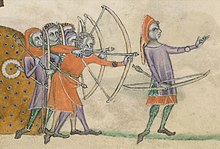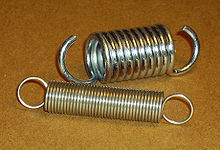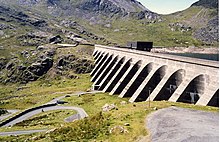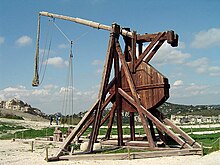Difference between revisions of "Toer conservation of energy"
| (14 intermediate revisions by the same user not shown) | |||
| Line 15: | Line 15: | ||
what is done to us can be adequately described either as a transfer | what is done to us can be adequately described either as a transfer | ||
of energy in one form from one place to another or the transformation | of energy in one form from one place to another or the transformation | ||
| − | of energy from one form to another. | + | of energy from one form to another. <br> |
| − | |||
| − | |||
What is the meaning of energy? How does one measure it? What are | What is the meaning of energy? How does one measure it? What are | ||
the various forms in which energy manifests itself? How is energy | the various forms in which energy manifests itself? How is energy | ||
| Line 24: | Line 22: | ||
various forms affect our environment? What is the source of all | various forms affect our environment? What is the source of all | ||
energy? What kind of energy flows and conversions take place in the | energy? What kind of energy flows and conversions take place in the | ||
| − | environment? | + | environment?<br> |
| − | |||
== Energy, types of energy-Kinetic and potential == | == Energy, types of energy-Kinetic and potential == | ||
| − | + | <br> | |
When an object is moved against a force, work is done and energy | When an object is moved against a force, work is done and energy | ||
is spent in the process. Thus we say “A person must have a lot of | is spent in the process. Thus we say “A person must have a lot of | ||
energy to do a hard day’s work”. In fact one way to define | energy to do a hard day’s work”. In fact one way to define | ||
| − | energy is: Energy is the capacity to do work. | + | energy is: Energy is the capacity to do work. The word ‘energy’ is derived from the Greek '''''energia''''''''-en |
| − | |||
| − | The word ‘energy’ is derived from the Greek '''''energia''''''''-en | ||
means ''''''''‘in’'''''''' and''' '''''ergon'''''''', means ''''''''work'''''. | means ''''''''‘in’'''''''' and''' '''''ergon'''''''', means ''''''''work'''''. | ||
| − | + | <br> | |
Energy is defined for an object in a particular state. When work | Energy is defined for an object in a particular state. When work | ||
has been done on an object, its energy changes. At a very basic | has been done on an object, its energy changes. At a very basic | ||
level, there are two forms of energy – kinetic energy and potential | level, there are two forms of energy – kinetic energy and potential | ||
| − | energy. | + | energy. For example, a block is lying at rest on a table. It is pushed |
| − | |||
| − | For example, a block is lying at rest on a table. It is pushed | ||
and it acquires a uniform velocity. Now the block has acquired some | and it acquires a uniform velocity. Now the block has acquired some | ||
energy (kinetic energy, as we will define shortly). While the cause | energy (kinetic energy, as we will define shortly). While the cause | ||
| Line 50: | Line 43: | ||
http://sciencelearn.org.nz/var/sciencelearn/storage/images/science-stories/harnessing-the-sun/sci-media/images/potential-and-kinetic-energy/255523-1-eng-NZ/Potential-and-kinetic-energy.jpg | http://sciencelearn.org.nz/var/sciencelearn/storage/images/science-stories/harnessing-the-sun/sci-media/images/potential-and-kinetic-energy/255523-1-eng-NZ/Potential-and-kinetic-energy.jpg | ||
| − | + | '''More examples of potemtial energy getting converted to kinetic energy''' | |
| + | |||
| + | {|class="wikitable" | ||
| + | |- | ||
| + | |http://upload.wikimedia.org/wikipedia/commons/thumb/a/a7/Longbowmen.jpg/220px-Longbowmen.jpg | ||
| + | |http://upload.wikimedia.org/wikipedia/commons/thumb/d/d5/Springs_009.jpg/220px-Springs_009.jpg | ||
| + | |- | ||
| + | |http://upload.wikimedia.org/wikipedia/commons/thumb/d/de/Stwlan.dam.jpg/220px-Stwlan.dam.jpg | ||
| + | |http://upload.wikimedia.org/wikipedia/commons/thumb/2/2e/Trebuchet.jpg/220px-Trebuchet.jpg | ||
| + | |} | ||
| + | |||
We can see that there are two ways of describing this (and for that | We can see that there are two ways of describing this (and for that | ||
matter, any) process. One is to study the cause (the force) and the | matter, any) process. One is to study the cause (the force) and the | ||
| Line 86: | Line 89: | ||
=== Learning Objectives === | === Learning Objectives === | ||
| + | #Energy is of two forms | ||
| + | #Potential and Kinetic | ||
| + | #Energy can be transferrred from one form to another | ||
| + | #Heat, Light and Sound are some of the ways in which we observe conversion of energy | ||
| − | <br> | + | <br> |
| − | |||
| − | |||
| − | |||
| − | |||
| − | |||
| − | + | === [[Toer_energy_activity_1|Activity 1 – Energy is ability to do work-I]] === | |
| − | + | === [[Toer_energy_activity_2|Activity 2 – Energy is ability to do work-II]]=== | |
| − | |||
== Concept 2 : Conservation of energy == | == Concept 2 : Conservation of energy == | ||
=== Learning Objectives === | === Learning Objectives === | ||
| + | #Energy is conserved | ||
| + | #Energy is transformed from one form to another | ||
| − | === Activity | + | === [[Toer_energy_activity_3|Activity 3 – Energy conversion]] === |
| − | |||
| − | |||
| − | |||
| − | |||
| − | |||
| − | |||
| − | |||
| − | |||
| − | |||
| − | |||
| − | |||
| − | |||
| − | |||
| − | |||
| − | |||
| − | |||
| − | |||
| − | |||
| − | |||
| − | |||
| − | |||
| − | |||
| − | |||
| − | |||
| − | |||
| − | |||
| − | |||
| − | |||
| − | |||
| − | |||
| − | |||
| − | |||
| − | |||
| − | |||
| − | |||
| − | |||
| − | |||
| − | |||
| − | |||
| − | |||
| − | |||
| − | |||
| − | |||
| − | |||
| − | |||
| − | |||
| − | |||
| − | |||
| − | |||
| − | |||
| − | |||
| − | |||
| − | |||
| − | |||
| − | |||
| − | |||
| − | |||
| − | |||
| − | |||
| − | |||
| − | |||
| − | |||
| − | |||
| − | |||
| − | |||
| − | |||
| − | |||
| − | |||
| − | |||
| − | |||
| − | |||
| − | |||
| − | |||
| − | |||
| − | |||
| − | |||
| − | |||
| − | |||
| − | |||
| − | |||
| − | |||
| − | |||
| − | |||
| − | |||
| − | |||
| − | |||
| − | |||
| − | |||
| − | |||
| − | |||
| − | |||
| − | |||
| − | |||
| − | |||
| − | |||
| − | |||
| − | |||
| − | |||
| − | |||
| − | |||
| − | |||
| − | |||
| − | |||
== Concept 3 : Sources of energy == | == Concept 3 : Sources of energy == | ||
| Line 223: | Line 123: | ||
=== Learning Objectives === | === Learning Objectives === | ||
| − | === Activity | + | === [[Toer_energy_activity_9|Activity 9 - Energy flow in ecosystem]] === |
| − | |||
| − | |||
| − | |||
| − | |||
| − | |||
| − | |||
| − | + | = Additional Information = | |
| − | + | #[http://web.mit.edu/8.02t/www/materials/modules/ReviewD.pdf This review document summarizes the law of conservation of energy very clearly] | |
| − | + | #[http://www.youtube.com/watch?v=8J_z3_3pue0 Measurement of work and energy] | |
| − | + | #[http://www.youtube.com/watch?v=sOa7EpJf89I&feature=related IIT Roorkee lecture on Work and energy] | |
| − | + | #[http://www.youtube.com/watch?v=VJfIbBDR3e8 How nuclear energy works] | |
| − | |||
| − | |||
| − | |||
| − | |||
| − | |||
| − | |||
| − | of energy | ||
| − | |||
| − | |||
| − | |||
| − | |||
| − | |||
| − | |||
| − | |||
| − | |||
| − | + | =Assessment Ideas= | |
| − | + | #Use a mind map for representing ideas | |
| − | + | #Make a video of the local environment | |
| − | = Assessment Ideas = | ||
| − | |||
| − | |||
| − | |||
= Project Ideas = | = Project Ideas = | ||
Latest revision as of 14:38, 18 March 2015
Concept Map
Notes for teachers (optional)
Energy is the basis of human life. Every single aspect of
human experience whether it be in the external world or what we do or
what is done to us can be adequately described either as a transfer
of energy in one form from one place to another or the transformation
of energy from one form to another.
What is the meaning of energy? How does one measure it? What are
the various forms in which energy manifests itself? How is energy
obtained and transformed from one form to the other? How can energy
be conserved? How do the production and utilization of energy in its
various forms affect our environment? What is the source of all
energy? What kind of energy flows and conversions take place in the
environment?
Energy, types of energy-Kinetic and potential
When an object is moved against a force, work is done and energy
is spent in the process. Thus we say “A person must have a lot of
energy to do a hard day’s work”. In fact one way to define
energy is: Energy is the capacity to do work. The word ‘energy’ is derived from the Greek energia'''-en
means '''‘in’''' and ergon''', means '''work.
Energy is defined for an object in a particular state. When work
has been done on an object, its energy changes. At a very basic
level, there are two forms of energy – kinetic energy and potential
energy. For example, a block is lying at rest on a table. It is pushed
and it acquires a uniform velocity. Now the block has acquired some
energy (kinetic energy, as we will define shortly). While the cause
of the change in the state was a force (the push), it has resulted in
the body acquiring a change in energy.

More examples of potemtial energy getting converted to kinetic energy

|

|

|

|
We can see that there are two ways of describing this (and for that matter, any) process. One is to study the cause (the force) and the other is to examine the change in energy.
Biological energy flow
We saw earlier that energy flows constantly through the Earth and its environment. Plants fix the solar radiation into carbohydrates and form the basis of much of the energy flow in the world. Either through the food chain or through the accumulation as fossil fuels, this accounts for the bulk of the energy in the world. We cannot discuss energy without discussing the connection with food and how energy flows through living organisms through food. This flow of energy through living organisms is called a food chain.
Energy flow in an ecosystem
An ecosystem is a community where living and non-living things interact. There are two main processes in an ecosystem – energy flow and nutrient flow. The energy flow in an ecosystem happens through the food chain.
Teaching Outlines
Concept 1 : Energy is ability to do work
Learning Objectives
- Energy is of two forms
- Potential and Kinetic
- Energy can be transferrred from one form to another
- Heat, Light and Sound are some of the ways in which we observe conversion of energy
Activity 1 – Energy is ability to do work-I
Activity 2 – Energy is ability to do work-II
Concept 2 : Conservation of energy
Learning Objectives
- Energy is conserved
- Energy is transformed from one form to another
Activity 3 – Energy conversion
Concept 3 : Sources of energy
Learning Objectives
Activities
Concept 4 : Types of energy (renewable)
Learning Objectives
Activities
Concept 5 : Energy flow in an ecosystem
Learning Objectives
Activity 9 - Energy flow in ecosystem
Additional Information
- This review document summarizes the law of conservation of energy very clearly
- Measurement of work and energy
- IIT Roorkee lecture on Work and energy
- How nuclear energy works
Assessment Ideas
- Use a mind map for representing ideas
- Make a video of the local environment
Project Ideas